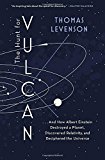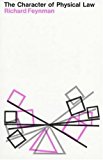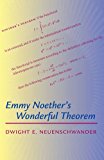Biology
Health and Nutrition
Dust Mites are not Impressed by Your Fancy Vacuum: These tiny creatures, that live in our beds, stuffed tigers, and pillows, cause asthma and other allergic reactions in many of us humans. So there has recently arisen an industry of expensive vacuum cleaners, mattress covers, and other gadgets designed to reduce their numbers and help us. None of these things work. The only effective control is to wash your bedding in hot water and keep soft toys out of the bed.
“What if It’s All Been a Big Fat Lie?”: Gary Taubes’ interesting and controversial NY Times article on diet; strongly challenged here and defended by Taubes here. Also see this.
Resources
Cornell University’s bird resource.
Curiosities of Biological Nomenclature
AntWeb: An amazing catalog of the ants of California and Madagascar.
“This website grew out of the activities of Sylvia and Stephen Sharnoff, who did the photographic fieldwork for the book Lichens of North America, by Irwin M.Brodo and the Sharnoffs, published in November, 2001 by Yale University Press.”
MIT Biology Hypertextbook: “A website which contains the basic molecular biology that is the basis of MIT’s core Biology course, ‘Introductory Biology’”
Ivory-Billed Woodpecker
NYTimes on Ivory-Billed Woodpecker discovery: April 28, 2005:
“The ivory-billed woodpecker, a bird long thought extinct, has been sighted in the swamp forests of eastern Arkansas for the first time in more than 60 years, Cornell University scientists said today.”
Ivory-Billed Woodpecker Rediscovered in Arkansas: A National Public Radio “Radio Expeditions” story.
Listening for the Call of a Vanished Bird - By James Gorman (With audio recordings):
“It was early afternoon in the swamp. We had spent the morning hiking through Louisiana bottomland forest and the early afternoon slogging through bayous in search of the ivory-billed woodpecker”
More Biology Links
Sea Dragon Images: Beautiful pictures and movies of these cousins to the seahorse.
Images of bioluminescence: from the Harbor Branch Oceanographic Image Library.
“The wasp slips her stinger through the roach’s exoskeleton and directly into its brain. She apparently uses sensors along the sides of the stinger to guide it through the brain […]. She continues to probe the roach’s brain until she reaches one particular spot that appears to control the escape reflex. She injects a second venom that influences these neurons in such a way that the escape reflex disappears. […] now it cannot move of its own accord. The wasp takes hold of one of the roach’s antennae and leads it […] like a dog on a leash.”
There is a grisly movie of the process.
“Semmelweis ordered all of the medical students to wash their hands[…]”
Calorie Restricted Diets in Humans:
“Severely restricting calories has been shown to slow aging and prolong life in mice and rats. Now early research hints that the same just might be true in humans.”
Scientists develop “brain chip”:
“US scientists say a silicon chip could be used to replace the hippocampus, where the storage of memories is co-ordinated.”
From the BBC science news website:
“Owls have been observed using dung as bait to trap beetles for food, the journal Nature has reported. Scientists have likened the behavior to ‘tool use’, something that is rarely seen amongst wild animals.”
“Scientists say they have identified an ocean sponge living in the darkness of the deep sea that grows thin glass fibers capable of transmitting light at least as well as industrial fiber optic cables used for telecommunication. The natural glass fibers also are much more flexible than manufactured fiber optic cable that can crack if bent too far.”
Rats Can Smell In Stereo: Rats can home in on smells using a method similar to the stereo processing of sounds, according to researchers at the University of Agricultural Science, Bangalore, India. The rats needed only one or two sniffs and sometimes as little as 50 milliseconds to accurately determine the source of an odour. For rats, “each sniff is a perceptually complete snapshot of the olfactory world, including both odour identity and stereo-based location.”
The mangrove rivulus: It can become a hermaphrodite and produce clones of itself; it has been found living inside coconuts and in beer cans; it can breath and eliminate waste through its skin, and can do so for months inside hollow logs, a behavior that biologists unfortunately term “logpacking”.
Kha-Nyou: A new rodent species, Laonastes aenigmamus, has been discovered in Laos: “To find something so distinct in this day and age is just extraordinary. For all we know, this could be the last remaining mammal family left to be discovered.”



